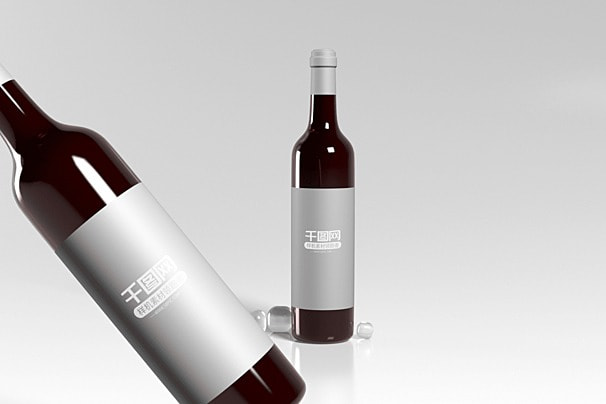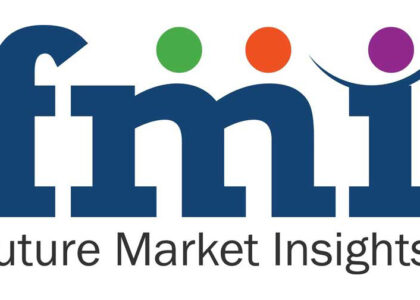
The global wine packaging market is poised for substantial growth with a projected CAGR of 5.4% from 2022 to 2032. Expectations indicate a significant increase in market value, surging from US$ 3.4 Billion in 2022 to an impressive US$ 5.7 Billion by 2032. Sales in the global wine packaging sector witnessed a valuation of approximately US$ 3.3 Billion at the close of 2021, marking a remarkable twofold expansion over the past decade. This growth trajectory underscores the evolving dynamics and increased demand within the wine packaging industry, reflecting a positive outlook for the coming years.
By 2032, glass is foreseen to dominate the global wine packaging market, commanding a substantial market share of 33.8%, while the cans and bag-in-box product types are expected to exhibit robust growth at CAGRs of 6.0% and 5.6%, respectively, throughout the forecast period. This signals a shifting landscape in wine packaging preferences, with a pronounced inclination towards glass and a notable surge in the popularity of cans and bag-in-box formats, highlighting the dynamic trends shaping the industry’s future trajectory.
Preserving the quality of stored wine is the primary function of wine packaging, requiring it to be inert in terms of flavor migration between the package and the product. Various forms of wine packaging, including bottles, cans, bag-in-box, barrels, and other options, cater to diverse preferences and needs within the industry. Each form is meticulously designed to ensure that the inherent characteristics and flavors of the wine remain intact, offering consumers a spectrum of choices for packaging that aligns with the preservation and enhancement of the wine-drinking experience.
Request Sample Report: https://www.futuremarketinsights.com/reports/sample/rep-gb-14860
Projected to achieve a CAGR of 6.7% between 2022 and 2032, Italy emerges as a significant player in the wine industry. As per Amfori, Italy stands out as the leading wine-producing country in terms of both volume and exports, contributing a substantial 19% to the global wine production in 2019. With approximately twenty distinct wine-producing regions, Italy’s expansive geographical territory becomes a driving force behind the surge in demand for wine packaging, emphasizing the pivotal role of the Italian market in shaping the landscape of the wine packaging industry.
Key Takeaways from the Wine Packaging Market:
- The glass segment is projected to hold 34% of the market share by the end of 2032. Glass is preferred for its properties such as being 100% recyclable and preserving the flavor and aroma of wine.
- The bag-in-box and cans segments are expected to create a cumulative incremental opportunity of US$ 780 Million over the next decade.
- The online retail segment is estimated to grow at a CAGR of 5.6% during 2022-2032, driven by the expansion of the e-commerce industry.
- Europe is expected to dominate the wine packaging market over the forecast period.
- With the increasing production of wine in the U.S., North America is projected to hold one-third of the global wine packaging market’s value share
Competitive Landscape
Key manufacturers operating in the wine packaging market are trying to focus on innovative product launches, acquisitions, partnerships, and sustainability. The manufacturers are committed to consistently offering innovative designs, shapes, sizes, and product types for wine packaging
- In March 2022, Vidrala S.A. partnered with Glass Hallmark. The company has embossed its bottles with a Glass Hallmark seal. The Glass Hallmark symbolizes a commitment to creating a sustainable future using glass. This aligns with the company’s sustainability strategy.
- In March 2022, Ardagh Group S.A., to design and manufacture a highly decorated wine bottle collaborated with Constellation Brands, Inc.
- In January 2022, Frugalpac Limited launched its second wine bottle called Celi. It is the world’s first commercially available paper bottle for wines.
- In November 2021, Ardagh Group S.A. the leader producer of glass packaging acquired Consol Holdings Proprietary Limited on the African continent.
Key Players:
- Owens-Illinois Group
- Ardagh Group S.A.
- Liqui-Box Corp
- Scholle Corporation
- All American Containers
- TricorBraun Inc.
Market Drivers:
- Real Estate Trends:
- Positive trends in the real estate market, such as increased home buying and selling activities, typically drive demand for moving supplies.
- Population Mobility:
- High levels of population mobility, including relocation for job opportunities or lifestyle changes, can contribute to a steady demand for moving supplies.
- Economic Factors:
- Economic growth and stability can influence people’s decisions to move, potentially boosting the demand for moving supplies.
- E-commerce Growth:
- The growth of e-commerce has led to an increase in demand for shipping and packaging materials, contributing to the overall moving supplies market.
- Urbanization:
- Urbanization trends, where people move to urban areas for work or lifestyle reasons, can drive demand for moving supplies.
- Environmental Concerns:
- A growing focus on sustainable and eco-friendly moving supplies may attract environmentally conscious consumers.
Market Restraints:
- Economic Downturn:
- Economic recessions or downturns can lead to reduced consumer spending, impacting the housing market and subsequently the demand for moving supplies.
- Housing Market Volatility:
- Instability or a decline in the housing market can result in decreased demand for moving supplies as people may delay or reconsider moving plans.
- High Competition:
- Intense competition among moving supplies providers can lead to pricing pressures, affecting profit margins for companies in the industry.
- Supply Chain Disruptions:
- Disruptions in the supply chain, such as those caused by natural disasters, pandemics, or geopolitical events, can impact the availability of moving supplies and increase costs.
- Environmental Regulations:
- Stringent environmental regulations may pose challenges for companies producing moving supplies, particularly if they rely on materials that are subject to restrictions.
- Technological Advances:
- Technological advancements in moving technologies or alternative solutions (e.g., virtual moving services) may change consumer behavior and affect traditional moving supplies demand.
Ready to Learn About Our Approach? Explore Our Methodology: https://www.futuremarketinsights.com/request-report-methodology/rep-gb-14860
Wine Packaging Market by Category
By Material:
- Glass
- Wood
- Paper and Paperboard
- Metal
- Plastic
By Product Type:
- Bottles
- Bag-in-Box
- Barrels & kegs
- Cans
- Others (Cartons, etc.)
By Sales Channel:
- Online Retail
- Offline Retail
About Future Market Insights (FMI)
Future Market Insights, Inc. (ESOMAR certified, recipient of the Stevie Award, and a member of the Greater New York Chamber of Commerce) offers profound insights into the driving factors that are boosting demand in the market. FMI stands as the leading global provider of market intelligence, advisory services, consulting, and events for the Packaging, Food and Beverage, Consumer, Technology, Healthcare, Industrial, and Chemicals markets. With a vast team of over 5000 analysts worldwide, FMI provides global, regional, and local expertise on diverse domains and industry trends across more than 110 countries.
Contact Us:
Future Market Insights Inc.
Christiana Corporate, 200 Continental Drive,
Suite 401, Newark, Delaware – 19713, USA
T: +1-845-579-5705
For Sales Enquiries: sales@futuremarketinsights.com
Website: https://www.futuremarketinsights.com
LinkedIn| Twitter| Blogs | YouTube

